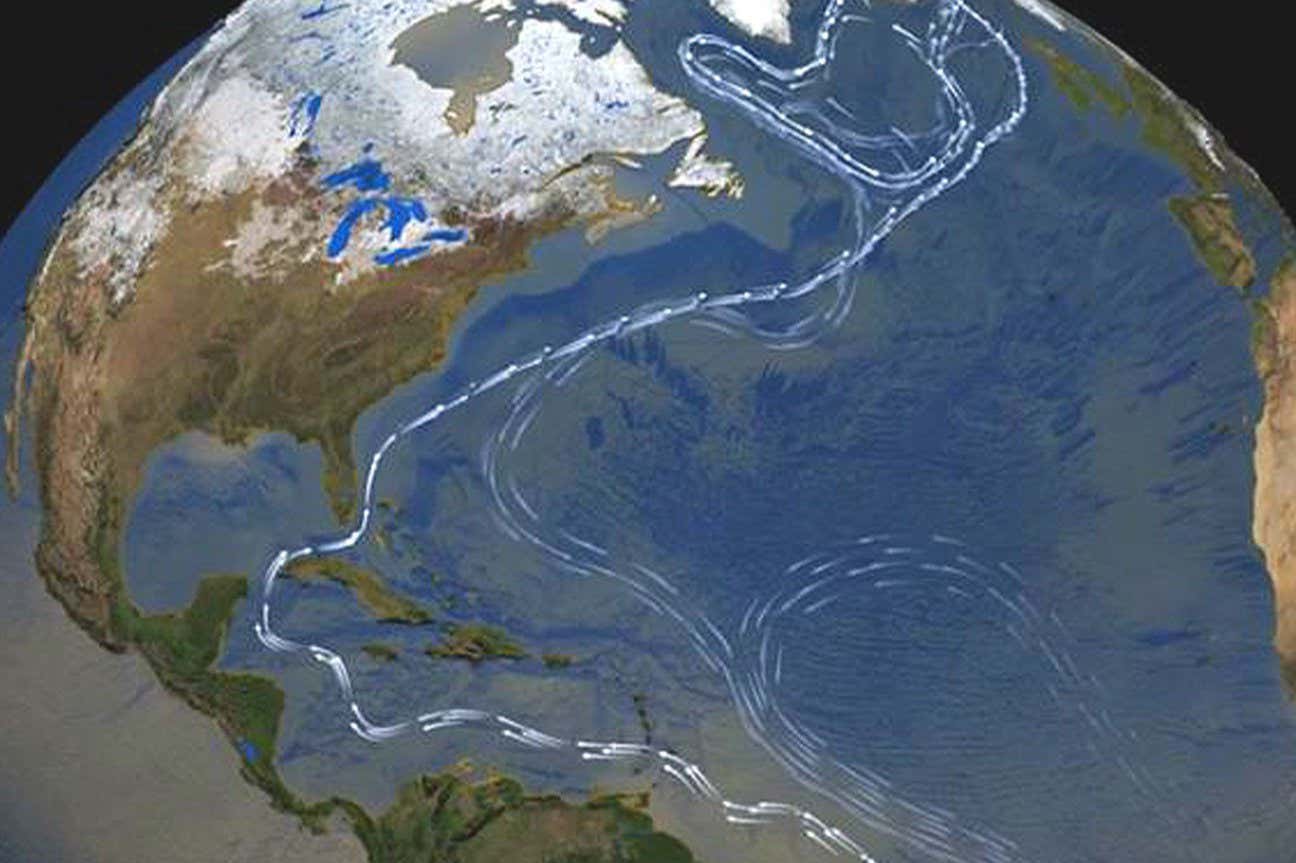Climate models predict that even under extreme warming, the Atlantic Meridional Overturning Circulation will weaken but not collapse entirely – although this could still have serious impacts
By Madeleine Cuff
26 February 2025
The AMOC brings warm water north from the tropics near the surface and takes cool water in the opposite direction in the deep ocean
NOAA
A critical ocean current is unlikely to shut down before the end of this century even under the most extreme climate scenarios, according to new findings that undermine doomsday predictions of an imminent catastrophic collapse.
The Atlantic Meridional Overturning Circulation (AMOC) transports warm water from the tropics northward, helping to keep northern Europe temperate. Warming temperatures and an influx of cold water from melting Arctic ice are weakening the current and, scientists fear, could shut it down altogether. This would plunge oceanic ecosystems into chaos and rapidly cool Europe’s climate by several degrees.
Read more
Is a broken jet stream causing extreme weather that lasts longer?
Advertisement
Some researchers say an irreversible shutdown of the AMOC could happen this century. But this worst-case scenario is unlikely, says Jonathan Baker at the UK’s Met Office.
To explore whether a complete AMOC collapse this century is possible, Baker and his colleagues used 34 climate models to simulate changes to the AMOC under extreme climate change, with greenhouse gas levels trebling from today’s levels overnight. The team also modelled huge volumes of freshwater entering the North Atlantic at many times the rate of current ice melt.
They found that although the AMOC weakens significantly under these two scenarios, the ocean current would continue in its weakened state, supported by upwelling of North Atlantic deep water driven by winds in the Southern Ocean. “Southern Ocean winds continue to blow and this pulls deep waters up to the surface, which acts like a powerful pump,” says Baker. “That keeps the AMOC running this century in the models.”
